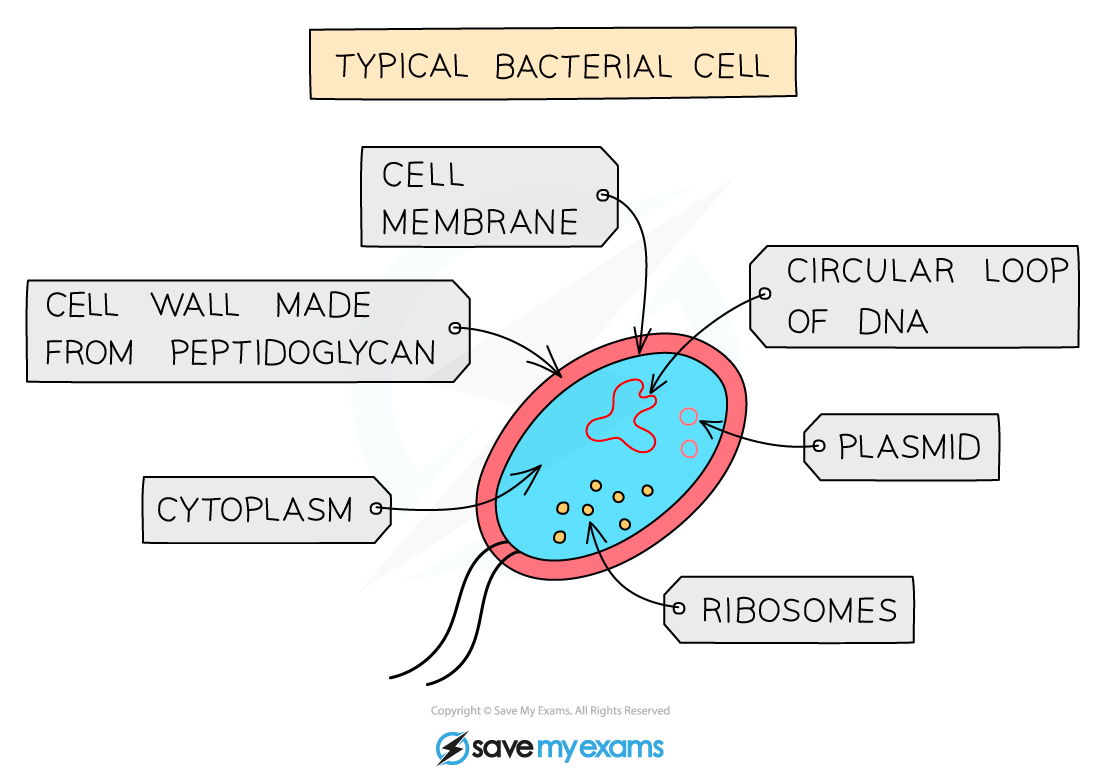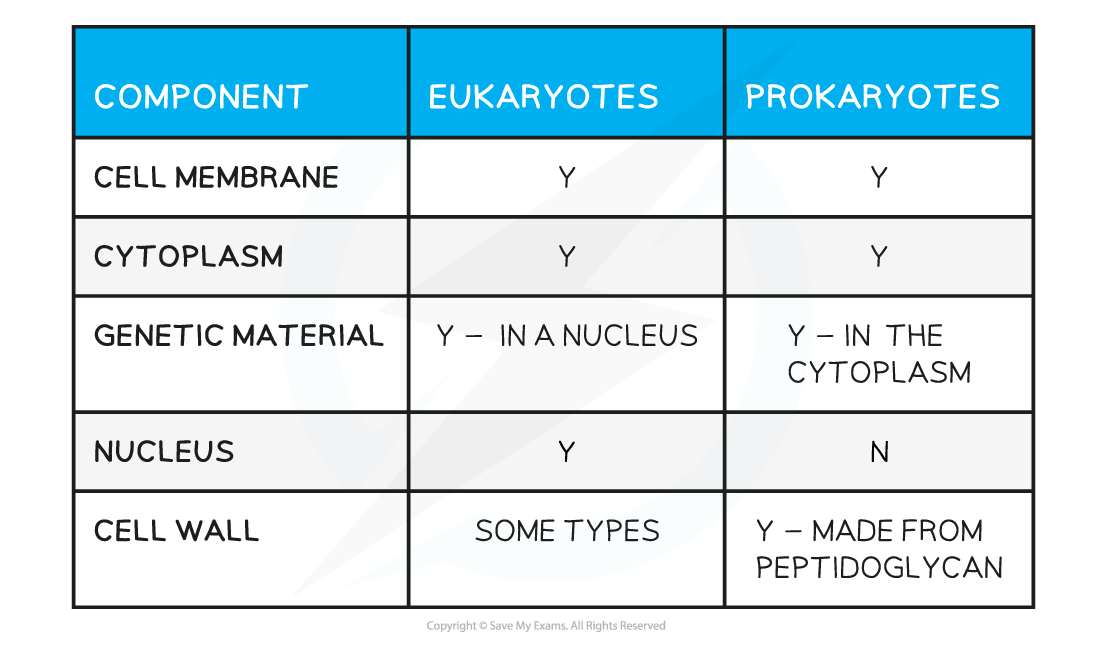- 翰林提供学术活动、国际课程、科研项目一站式留学背景提升服务!
- 400 888 0080
Edexcel IGCSE Biology 复习笔记 1.2.4 Prokaryotic Organisms
Edexcel IGCSE Biology 复习笔记 1.2.4 Prokaryotic Organisms
Prokaryotes
- All living organisms can be grouped or ‘classified’ using a classification system that consists of five kingdoms. These five kingdoms are:
- Animals
- Plants
- Fungi
- Protoctists
- Prokaryotes
- The prokaryotes are different from the other four kingdoms (which are all eukaryotes) as prokaryotic organisms are always single-celled and do not contain a nucleus
- Instead, the nuclear material of prokaryotic cells is found in the cytoplasm
- Bacteria are prokaryotic organisms
Bacteria
- Bacteria, which have a wide variety of shapes and sizes, all share the following biological characteristics:
- They are microscopic single-celled organisms
- They have a cell wall (not made of cellulose), cell membrane, cytoplasm and plasmids
- They lack a nucleus but contain a circular chromosome of DNA
- They lack mitochondria and other membrane-bound organelles found in eukaryotic cells
- Examples of bacteria include:
- Lactobacillus (a rod-shaped bacterium used in the production of yoghurt from milk)
- Pneumococcus (a spherical bacterium that acts as the pathogen causing pneumonia)
- Bacteria feed in different ways:
- Some bacteria can carry out photosynthesis
- Most feed on other living or dead organisms (if they feed on dead organic matter then they are known as saprobionts or decomposers)

A typical bacterial cell
Prokaryotic Cells Table

转载自savemyexam
站内搜索
竞赛真题免费下载(点击下载)
在线登记
最新发布
© 2024. All Rights Reserved. 沪ICP备2023009024号-1





